Okay, so you know where you’re going hunting and you’ve pulled your permits, know the laws and have the right rifle. Now what?
Well, there are a couple ways to hunt. There is stand hunting, driving, still hunting and stalking.
Stand hunting.
Stand hunting is not for those that are the least bit nervous of heights. I’ve only been stand hunting a few times. Mostly, because my dad’s stand is a one-man stand. Basically, it works well because deer rarely look up when suspicious. You can also see a lot better and get a better shot, without worrying about underbrush. And (this is important to us girls) you don’t get as dirty as you do when you’re tramping through the woods, collecting all sorts of sticky seedpods and ticks and other creepy crawlies. The key to using one of these is to set it up in the right location. Generally near the edge of a corn field, or right off of a deer path, salt lick or watering hole. Also, you need to be VERY careful when setting the stand up. Accidents with these are generally very unpleasant.

Driving requires multiple people generally spreading out along on opposite ridges and driving the deer down into the valley. I’ve never done this, but sometimes the guys around here will all get together towards the end of the season and do a drive. There are a few things you have to be careful of. Primarily, accidentally shooting one of your buddies. So make sure everyone is wearing very good reflective and neon markers (generally vests, hats, chaps, etc.). Also, it is most successful if everyone is experienced hunters and excellent marksmen and understand the basics of driving.
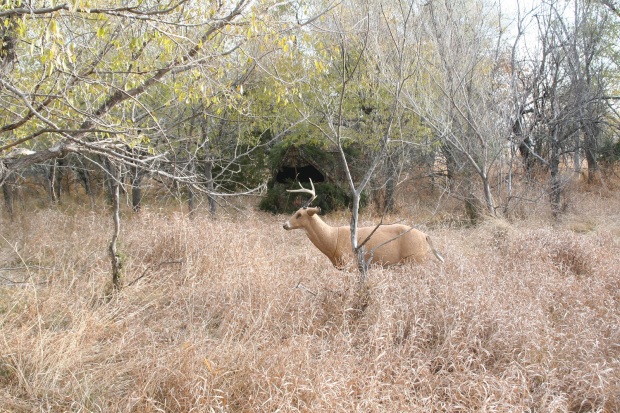
Still hunting is what I’ve done the most. And it’s easy. Find a place to sit (similar places to where you’d put a stand (see above) and find a chair and sit! We sometimes make a little ‘hole’ behind a downed tree or in a little hollow of ground and we surround it with branches and other natural camouflage. Sometimes we just haul a porch chair out into the woods and let it sit for a few weeks before hunting season so the wildlife gets used to its presence and so it starts taking on the smell of the outdoors. Then you go out there and wait.

Stalking is probably the most fun, especially if you have a lot of pretty land and don’t mind walking. Basically you get suited up and grab your gun and walk until you see something. Then you get withing range, which sometimes means trying to head it off or chase it into a ravine. With stalking, you need to perfect the art of walking almost silently, hiding your noise under the noises of nature, being very, very still and making quick mental estimations. The deer will almost certainly see you before you see it since their senses are so much better than ours. However, as the saying goes ‘curiosity killed the cat’ and they are definitely one of the most curious creatures ever. They generally won’t run far before stopping to try and make out what you are.
Okay so a few facts* about deer that are important to take into consideration.
- They have an amazing sense of smell. Their sense of smell is between 500 and 1000 times that of a human. They can smell you up to a half mile away. Sooo, you need to not eat anything that will give you gas, before you go out. You shouldn’t use strong smelling shampoos, soaps or deodorants before going out. DON’T wear perfumes. And it’s good to hang up your clothes outside so they take on a natural smell before going into the woods. Also, Dad suggests washing with baking soda instead of normal soaps, using baking soda deodorants** (recipe at the bottom of the page) and not drinking beer or coffee and brushing your teeth really well. If you’re a die-hard and you’re stalking or sitting, you can roll around on the ground and get kind of dirty and earthy smelling. And if you’re really a die hard….well, bucks are attracted to the…er….scent of Does, so there are nasty scents you can get and dab on. (I don’t do this. It’s gross.)
- Deer don’t see like we do, but don’t let this fool you. Their eyesight is 5 times better than ours, according to Dr. Karl Miller and his cohorts at the University of Georgia. They can see yellows and blues, but have trouble seeing reds and greens. They can also spot movement with amazing speed. “Get rid of the blue and anything shiny, and make sure movement is minimized,” Dr. Miller says. “It doesn’t matter that you’re sitting out in the open as long as you’re not moving.” That’s one reason camo is important. It breaks up your shape and helps you to blend into your surroundings. I’m not going to say there is any specific type of camouflage you should wear, it really just depends on what you want and can afford.
- Just as the other senses we’ve discussed, a deer’s sense of hearing is incredibly sharp. The two ways to ways to defeat a deer’s hearing is to be silent, or to be loud. To be silent, you can use flannel to pad your hideout and dull the sounds you make and to learn how to walk like the Indians. This is possible. It just takes a lot of practice. Or you can ‘be loud’. This means that you make nature noises. If you go out in the woods and listen, you’ll find that it is actually quite loud. And you can ‘hide’ your noise under that blanket of sound. You can add to this by getting a pair of antlers and ‘rattling’ them. There are also buck calls you can get and blow occasionally. (I suggest watching a few YouTube videos on how to use both of these things.) Also pawing, stirring up leaves and basically making it sound like there are a couple of bucks fighting over a doe. This calls in more bucks. There are also doe calls that work much the same way.
Some tips regarding your rifle.
When you’re hunting, it’s easy for your firearm to get wet and dirty. Even if it isn’t actually wet outside, if it’s cold and then you come inside, the gun will condensate. Make sure that after the gun is room temperature, you wipe it down thoroughly. It is also important to clean your rifle after you shoot it. (We’ll cover cleaning in another post.) When you go out hunting, make sure you bring several rounds of ammo, just in case. Also, and this is very important, make sure your aim is good. The worst thing ever is shooting a deer and just wounding it. We aren’t out to maim deer, but to kill them. Killing means they should go down pretty fast which = as little pain as possible. So practice, practice, practice!
…And here comes the deer you’ve been waiting for…..Shot placement.
Okay, so here is a picture of a deer’s insides with your take-down placements marked.
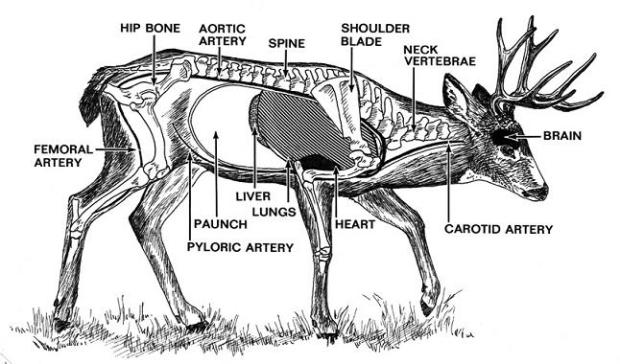
So where you shoot, depends on how the deer is standing and whether it is a buck or a doe. If it’s a buck, and you want to keep the head to mount, the optimal place to shoot it is in the heart and/or lungs. If it’s a doe or a buck who’s head you don’t care about keeping, you should shoot it through the brain, which means aim for the eye. However, missing the head (their heads move around a lot) is kind of tricky, but is sure to drop the deer immediately and painlessly. Other than that, the heart and lungs are best.  This is what it looks like for real. Don’t shoot the deer anywhere past the front shoulders, because there’s a greater chance of just wounding it and it running and your having to track it, possibly for miles. It will also be an a lot of pain. Be a responsible huntress. If you’re going to shoot at it, be sure you’re going to kill it.
This is what it looks like for real. Don’t shoot the deer anywhere past the front shoulders, because there’s a greater chance of just wounding it and it running and your having to track it, possibly for miles. It will also be an a lot of pain. Be a responsible huntress. If you’re going to shoot at it, be sure you’re going to kill it.
Hunting is kind of an art. It takes a little time, but it isn’t too hard to master, if you have the patience and just keep trying. If at first you don’t succeed, try, try again!
*http://www.realtree.com/deer-hunting/articles/busted-five-things-you-don-t-know-about-deer-senses
**Natural deodorant: 2 Tbsp. baking soda, 1 Tbsp. arrowroot or corn starch, 3 Tbsp. coconut oil. Mix together until it’s the consistency of sour cream. Smear a little dab under your arms and go! 🙂
If you have any questions, post them in the comments below and I’ll be sure to answer them. Thank you and happy hunting!


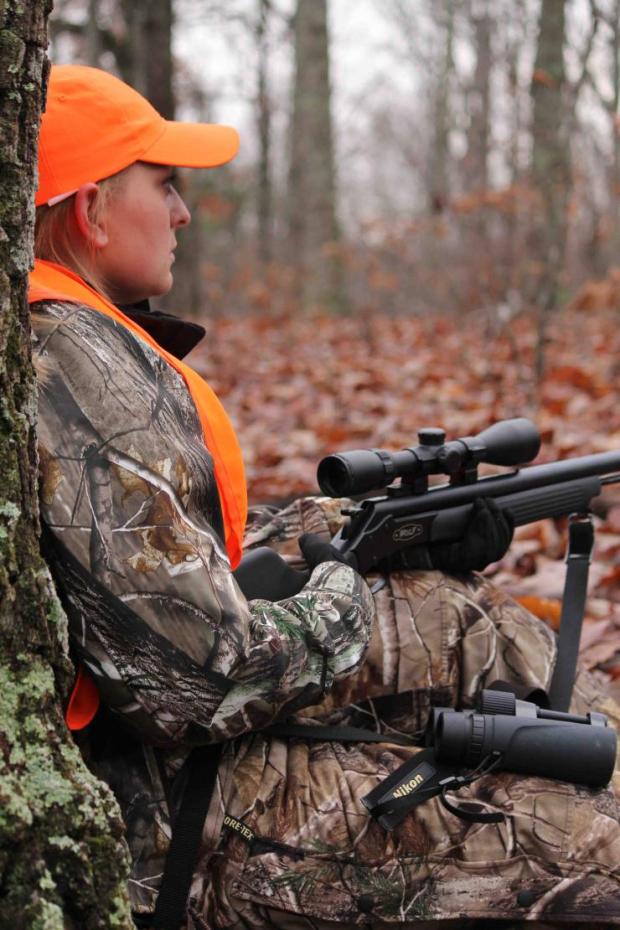


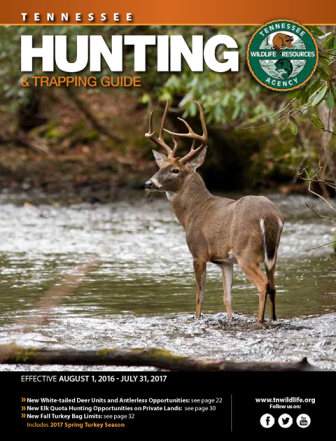
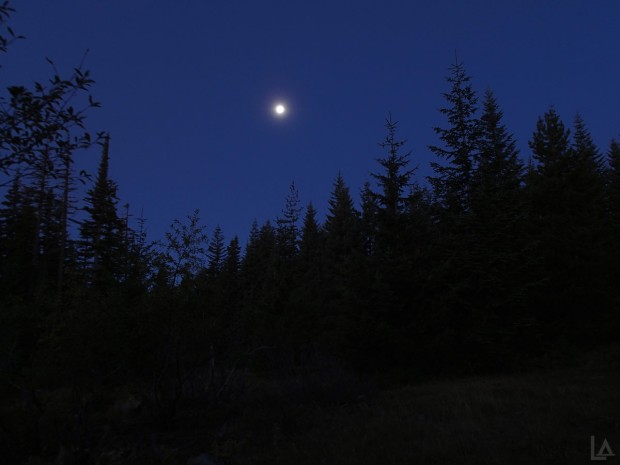 Rather addicting, actually.
Rather addicting, actually.